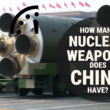In the lifetimes of the survivors
By Akira Kawasaki, August 5, 2015
Editor's note: In consideration of the president's trip, we are reprinting this Bulletin article from August, 2015.
The 70th anniversary of the Hiroshima and Nagasaki bombings is a highly symbolic one. Seventy years, after all, is roughly an average human lifespan—so time is running out for the relatively few individuals who have first-hand experience of a wartime nuclear detonation. Many survivors of Hiroshima and Nagasaki, known in Japanese as Hibakusha, have already passed away. Fewer than 200,000 are still living. The average Hibakusha is now more than 80 years old. What will their legacy be? Has the world absorbed the lessons that the Hibakusha have sought to teach? And how will Hiroshima and Nagasaki be remembered by generations to come?
For decades, Hibakusha have spoken tirelessly and courageously about their tragic experiences. They have warned the world about the cruel, inhumane, and immoral effects of nuclear weapons. They have repeatedly sent delegations to the UN General Assembly and to review conferences for the Nuclear Non-Proliferation Treaty (NPT). They have conducted letter-writing campaigns urging nuclear weapon states to accelerate disarmament. They have appealed to both policy makers and ordinary people to create a world free of nuclear weapons.
But outside Japan, their voices have often been ignored. Indeed, their message has sometimes been misinterpreted so badly that the horrific experiences they describe have been portrayed as an incentive for nations to develop nuclear weapons in the name of deterrence.
But deterrence doesn't explain why nuclear weapons have not been used in wartime over the last seven decades. The United States considered using nuclear weapons during both the Korean and Vietnam Wars—but did not use them. US leaders rejected the nuclear option not because they feared retaliation but because they understood the physical, humanitarian, and political consequences that the nuclear option would have entailed. In other words, it is not an adversary's readiness to use nuclear weapons, but rather recognition of these weapons' catastrophic impact, that has prevented wartime nuclear detonations for 70 years.
But as Hibakusha continue to age, and as their memories fade, the taboo surrounding the use of nuclear weapons may weaken in national policy debates. Even in Japan nowadays, the doctrine of nuclear deterrence is challenged less and less. This has provided space for a handful of ideologues to advocate that Japan become nuclear-armed itself.
Still, the Hibakusha, whose dream is to see a world without nuclear weapons within their lifetimes, have in recent years gained hope for disarmament. Their renewed hope is largely due to the international community's increased focus on the humanitarian consequences of using nuclear weapons.
A movement gets moving. The "humanitarian initiative" arguably began with a 2010 appeal by the president of the International Committee of the Red Cross that noted "the unspeakable human suffering" that nuclear weapons cause and called for their elimination "through a legally binding international treaty." The next year, the Council of Delegates of the Red Cross and Red Crescent issued a resolution that highlighted the "destructive power of nuclear weapons [and] the threat they pose to the environment and to future generations." The resolution appealed to all states to "ensure that nuclear weapons are never again used" and to work with urgency and determination toward a binding agreement that eliminates nuclear weapons.
Then, during a 2012 NPT meeting in Vienna, the nation of Switzerland issued a statement on behalf of 16 countries emphasizing the humanitarian dimensions of nuclear disarmament. The statement stopped short of calling for a ban on nuclear weapons. But the number of countries that support the statement has grown. By April of this year, 159 countries had signed on to a sixth version.
In the interim, a series of international conferences on the humanitarian impact of nuclear weapons was conducted. Featuring testimony from Hibakusha, these conferences built upon the lessons of Hiroshima and Nagasaki; there was also testimony from survivors of nuclear tests. Experts highlighted the catastrophic effects that would proceed from any nuclear detonation—whether intentional, accidental, or as a result of miscalculation. Tens of millions would be killed, injured, or displaced. The global climate would be disrupted, leading to famine. Communication infrastructures would be destroyed and the global economy would be impaired, rendering impossible any effective humanitarian response by governments or relief agencies.
In response to these appalling scenarios, the chair of the 2014 humanitarian conference in Nayarit, Mexico stated that the “time has come to initiate a diplomatic process” toward reaching “new international standards and norms, through a legally binding instrument.” He also stated that “in the past, weapons have been eliminated after they have been outlawed” and that “this is the path to achieve a world without nuclear weapons.” In other words, he called for an outright ban on nuclear weapons—something that would go far beyond the relatively weak disarmament requirements of the NPT. He identified the 70th anniversary of the Hiroshima and Nagasaki attacks as “the appropriate milestone to achieve our goal.”
Existing international law doesn't regulate nuclear weapons properly. Unlike other weapons of mass destruction, nuclear weapons are not banned in explicit terms. The NPT is the only multilateral treaty that contains a binding commitment to nuclear disarmament—but this treaty, while it prevents most states from acquiring nuclear weapons, effectively allows five states to possess them. What's needed, then, is a complete legal prohibition against all nuclear weapons.
In order to redress this fundamental deficit in the disarmament regime, the Austrian government at the 2014 humanitarian conference in Vienna initiated what has become known as the Humanitarian Pledge. In the pledge, Austria called on all parties to the NPT to "identify and pursue effective measures to fill the legal gap for the prohibition and elimination of nuclear weapons.” This statement, though rendered in rather bland diplomatic language, appears to identify the Nuclear Non-Proliferation Treaty as inadequate for achieving disarmament and pledges action to create an alternate, much stricter legal structure. A number of civil society groups have begun promoting the pledge—and it has now been endorsed by some 110 governments, a number that continues to grow.
A fitting legacy. For 70 years, Hibakusha have worked to communicate that nuclear weapons are inhumane and the consequences of using them are unacceptable. In Nayarit, the Hibakusha Setsuko Thurlow said that “Although we Hibakusha have spent our life energy to warn people about the hell that is nuclear war, in nearly 70 years there has been little progress in the field of nuclear disarmament. … It is our hope that this new movement to ban nuclear weapons will finally lead us to a nuclear weapon–free world.”
Now, within the limited time left to those who have first-hand experience of wartime nuclear detonations, is the moment to establish an international treaty that stigmatizes nuclear weapons, criminalizes them, and provides for their total elimination. Such a treaty would honor the Hibakusha's seven decades of work and provide them a fitting, lasting legacy.
Topics: Nuclear Weapons
Share: [addthis tool="addthis_inline_share_toolbox"]














